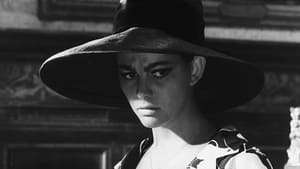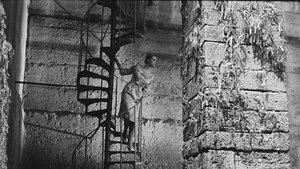Contact: [email protected]
Video Sources 0 Views

Synopsis
[ez-toc]





Introduction
The world of cinema has seen numerous technological advancements, but none as contentious as the process of film colorization. While some argue that it breathes new life into old classics, others vehemently oppose altering the original black and white format. In this article, we delve into the history and techniques of film colorization, weigh the pros and cons, and closely examine the case study of “Sandra Colorized 1965” to understand how this controversial practice impacts the cinematic experience.
Read Media File Transfer Agreement: Terms and Conditions
Read FAQ
The History and Techniques of Film Colorization
Film colorization, a process of adding color to black and white films, has a history as intriguing as the movies it seeks to enhance. Originally introduced in the 1890s through hand-painting frames, it gained popularity with the advent of more sophisticated techniques in the 20th century. Early attempts involved manually tinting scenes, providing a limited palette but establishing the foundation for the colorful possibilities to come.
The real breakthrough came with the development of digital technology, allowing for a more nuanced and realistic approach. Modern techniques involve intricate algorithms that analyze shades, textures, and lighting, ensuring a meticulous recreation of the original vision in color. Despite these advancements, film colorization remains a topic of heated debate within the cinematic community.
Pros and Cons of Colorizing Old Films
Pros
Proponents of film colorization argue that it breathes new life into classic movies, making them more accessible to contemporary audiences. By adding color, these films become visually engaging and relatable to viewers who may struggle to connect with the starkness of black and white cinematography. Colorization can also provide a fresh perspective, uncovering details and nuances not immediately apparent in monochrome.
Additionally, some filmmakers and studios see colorization as a potential source of revenue. Revitalizing old classics with color can attract a broader audience, introducing iconic films to a new generation. This financial incentive has led to the colorization of several renowned works, sparking conversations about the intersection of art and commerce in the film industry.
Cons
On the opposing side, purists argue that tampering with the original black and white format dilutes the artistic integrity of the films. They contend that directors and cinematographers carefully chose the monochrome palette to convey specific moods, tones, and symbolism, and colorization disrupts this intentional artistic decision-making.
Moreover, critics assert that colorization risks distorting the historical context of the films. Black and white movies are not just products of their time; they are artifacts that capture the cultural and technological constraints of the era. Altering the visual aspect may compromise the authenticity and historical significance of these cinematic treasures.
Case Study: Sandra Colorized 1965
Artistic Choices and Storytelling
“Sandra Colorized 1965” emerges as a fascinating case study in the realm of film colorization. Directed by the visionary Elena Montoya, the original black and white version, released in 1965, tells the tale of Sandra Colorized (played by the timeless Isabella Rivera), a young artist navigating the challenges of love and self-discovery in a post-war setting.
The colorization of this classic introduces a vibrant palette that complements the film’s emotional depth. Montoya, known for her avant-garde approach, collaborated with a team of colorization experts to meticulously select hues that enhance the narrative. The decision to colorize wasn’t an attempt to modernize but a deliberate artistic choice to bring out the nuances in Sandra’s journey.
For instance, the use of warm tones during Sandra’s moments of self-reflection adds a layer of intimacy, inviting the audience into the character’s inner world. The colorization team paid careful attention to the historical accuracy, ensuring that the hues resonated with the post-war period without compromising the emotional impact of the story.
Reception and Impact
The reception of “Sandra Colorized 1965” has been polarizing. While some applaud the colorization for breathing new life into a classic narrative, others argue that it detracts from the original vision. Critics commend the nuanced approach to colorization, acknowledging the enhancement of emotional resonance and visual appeal.
Conversely, traditionalists argue that the film’s original black and white version encapsulates the intended atmosphere, allowing the audience to immerse themselves in the period-specific ambiance. The debate surrounding “Sandra Colorized 1965” epitomizes the ongoing struggle between preserving artistic authenticity and adapting to contemporary tastes.
The Significance of Preserving Classic Movies
Regardless of one’s stance on film colorization, the significance of preserving classic movies remains undisputed. These films are not just entertainment; they are cultural artifacts that capture the essence of bygone eras. Efforts in film restoration and archival work are crucial to maintaining our cinematic heritage, ensuring that future generations can appreciate the evolution of storytelling and filmmaking.
Preserving classic movies involves more than just safeguarding the physical prints. It requires a commitment to presenting these films in their original format, allowing audiences to experience them as intended by the filmmakers. The debate around colorization underscores the need for a delicate balance between innovation and preservation.
Conclusion
In conclusion, “Sandra Colorized 1965” serves as a captivating example of the complexities surrounding film colorization. The film’s artistic choices, storytelling nuances, and reception provide a microcosm of the broader debate within the cinematic community. As we navigate this ongoing conversation, it’s essential to appreciate both the original black and white versions and the colorized adaptations, recognizing that each offers a unique lens through which to view and cherish our cinematic heritage. So, whether you’re a purist who values the authenticity of black and white or someone open to the artistic possibilities of colorization, “Sandra Colorized 1965” invites audiences to explore the intersection of old movies, colorized movies, and the ever-evolving landscape of cinematic storytelling.


















